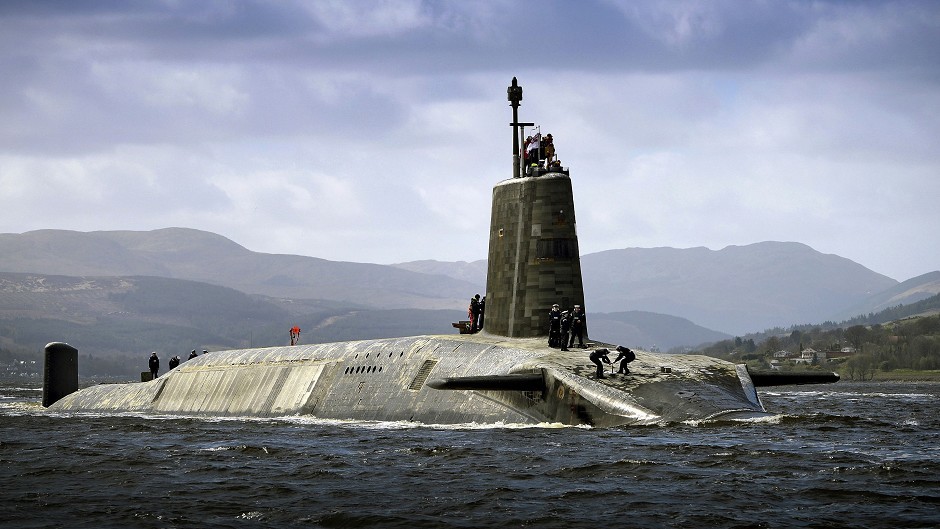Removing Trident nuclear weapons from Scotland could take three times longer than the SNP wants – but may also be billions of pounds cheaper than predicted.
A new study by the Royal United Services Institute (Rusi) has examined ways to relocate the missile system from the Clyde if there is a referendum Yes vote next month.
It said that 2028 – when the next generation of nuclear submarine is due to be deployed – would offer a more “natural target” date to remove Trident, not the 2020 deadline outlined by Scottish ministers.
But even then the relocation date would be likely to “slip”, according to the analysis.
The paper also suggests that recreating nuclear facilities outside Scotland would add up to £3.5billion to the cost of maintaining the fleet, plus the cost of acquiring land – but would be far less than a previously-predicted £25billion.
While not “trivial”, Rusi says that the obstacles to replacing facilities at Faslane and Coulport were also not so insurmountable as to force the rest of the UK into nuclear disarmament.
“While the technical and financial challenges presented by Scottish independence will influence the discussion on the future of the UK’s nuclear deterrence, they are not severe enough to dictate it,” it said.
The paper recommends a joint feasibility study between the Scottish and UK Governments after a Yes vote to find a way forward.
On the timetable, the study said: “This relocation programme could not be completed by the 2020 target date currently envisioned by the Scottish Government, and linking relocation to a specific date would likely hinder rather than help its completion.
“Instead, it would be preferable for the timescales for relocation to be linked to the UK’s transition from Vanguard to successor-class submarines, currently due to begin in 2028.”
A Scottish Government spokeswoman said: “Trident is opposed by the people and parliament of Scotland.
“The Scottish Government position is that Trident should be removed from an independent Scotland by 2020 – before we are hit with a share of the further £100 billion in lifetime costs, at 2012 prices, which are estimated for its replacement.”
